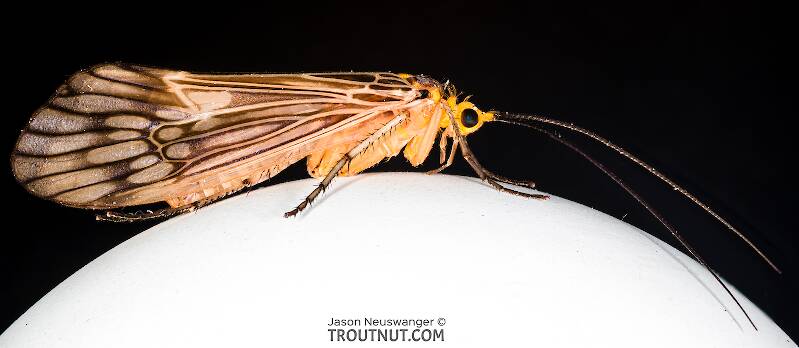
Salmonflies
Pteronarcys californica
The giant Salmonflies of the Western mountains are legendary for their proclivity to elicit consistent dry-fly action and ferocious strikes.
Featured on the forum

This specimen keys pretty easily to Onocosmoecus, and it closely resembles a specimen from Alaska which caddis expert Dave Ruiter recognized as this genus. As with that specimen, the only species in the genus documented in this area is Onocosmoecus unicolor, but Dave suggested for that specimen that there might be multiple not-yet-distinguished species under the unicolor umbrella and it would be best to stick with the genus-level ID. I'm doing the same for this one.

Troutnut is a project started in 2003 by salmonid ecologist Jason "Troutnut" Neuswanger to help anglers and
fly tyers unabashedly embrace the entomological side of the sport. Learn more about Troutnut or
support the project for an enhanced experience here.
Giant Cream Pattern-Wing Sedges
This common name refers to only one genus. Click its scientific name to learn more.
Caddisfly Genus Hydatophylax
These are often called Giant Cream Pattern-Wing Sedges.
These are huge caddisflies. The larvae may be nearly an inch and a half long and build three-inch cases. Hook sizes 4-6 are appropriate for the pupae.

I had some trouble working through the genus key for this one because I'm not great at interpreting caddis wing venation. Fortunately, figure 19.707 in An Introduction to the Aquatic Insects of North America (Fifth Edition) shows the distinctive color pattern of the striking forewings on Hydatophylax argus, which is a perfect match for the pattern as well as venation. As there are no other species in that genus in this area, I can be pretty confident in the species ID.
References
- Merritt R.W., Cummins, K.W., and Berg, M.B. 2019. An Introduction to the Aquatic Insects of North America (Fifth Edition). Kendall/Hunt Publishing Company.

